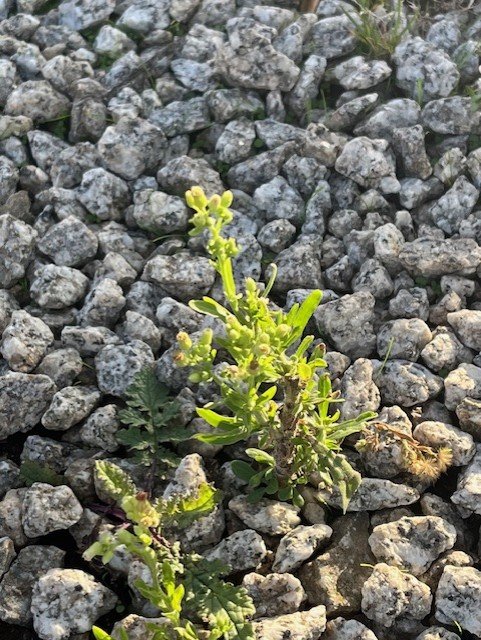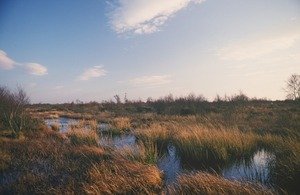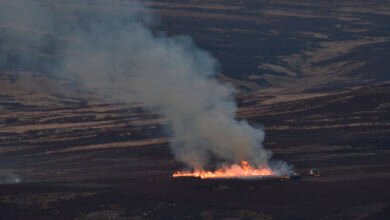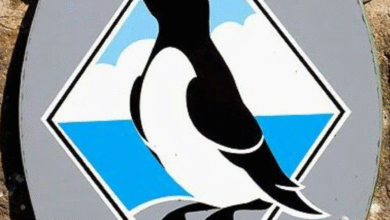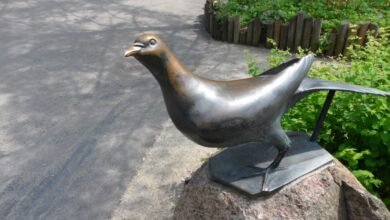 I blame Trevor Dines (click here) for the fact that I glanced at a plant in the car park of the Helston Premier Inn last week and wanted to know what it was. With my (lack of) botanical knowledge it was a toss-up between realising it was a plant I’ve seen thousands of time before (but had forgotten) and it being a new plant for me. It turned out to be the latter – although it wasn’t quite that simple (but it was fun).
I blame Trevor Dines (click here) for the fact that I glanced at a plant in the car park of the Helston Premier Inn last week and wanted to know what it was. With my (lack of) botanical knowledge it was a toss-up between realising it was a plant I’ve seen thousands of time before (but had forgotten) and it being a new plant for me. It turned out to be the latter – although it wasn’t quite that simple (but it was fun).
With my finely honed skills of taking a series of poor photographs of plants and then consulting an identification app I quickly got to the point that I was looking at a fleabane which might have been Canadian or Guernsey. Since I was in Cornwall it felt like Guernsey might be a better bet although since its scientific name is Erigeron sumatrensis and an alternative name appears to be Tropical Horseweed and it may be native to South America I decided I shouldn’t give too much weight to that. And Canadian Fleabane seems a bit more widespread than Guernsey Fleabane too. But it seemed to be a fleabane at least.
I looked around the car park for helpful botanists but didn’t spot any, but there was a scornful-looking Great Black-backed Gull (no photo required) on the Premier Inn roof, so I threw myself on the mercy of Bluesky which seems to be largely populated by friendly botanists. My, I received help! Thank you all.
Opinions were divided but that was probably because of the poor photographs. I’m good at bad photographs – it’s a knack. I don’t feel I need to defend my photographic skills, I’d rather wallow in their lack, but I would just mention that when facing a scary new plant it is quite difficult to know which bit of it is most important to photograph. Through Bluesky and Google I understand that it is hairiness I should be checking and in particular the hairiness of the phyllaries. First find your phyllaries!
I must have seen millions of phyllaries without realising, but phyllaries are green bits, a bit like leaves, that are parts of flowers. Cunningly they are also called involucral bracts and tegules. I didn’t have a hand lens with me but I pressed my 49-year-old Zeiss 10x40B Dialyts into service (you just look through the wrong end at plants and other small things) and looked for hairs on the phyllaries. The GBBG looked utterly disdainfully at me but I don’t need binoculars to identify a very large gull with a very black back and pink legs a mere 60m away.
The phyllaries had hairs. Some of them had loads of hairs and some of them not so many. There were hairs on the leaves too. I took some more photos and fed them through ObsIdentify, iNaturalist and, a new one for me, Flora Incognita.
This is the image I used…
 … and these are the results.
… and these are the results.
Flora Incognita says Guernsey Fleabane;

ObsIdentify says:

Hang on! Bilbao Fleabane! 88%? Where did that come from?
And iNaturalist has defected to Bilbao (aka Tall!) Fleabane too, 84%:

Hmm. Time to check out and I didn’t find the plant guide on the wall of my room that much help.

It was time to get on with my life (including seeing the Cornish Heath at Goonhilly) so I picked a bit of fleabane to bring home to Northants for Round 2.
This is a very clear guide to fleabanes;

Very clear – but now there are four of them! We now meet Argentine Fleabane.
OK, after a good 45 minutes at home on Saturday morning, I have decided that it isn’t Bilbao because my fleabane is much hairier, at least in some places, than is allowed. My fleabane has many very hairy phyllaries (and some not so hairy too), it also has hairs not only on the edge of its leaves but also all over them (top and bottom) so I am dumping Canadian (even though that is where I started).
Rightly or wrongly I am now choosing between Guernsey and Argentine. Guernsey is much commoner (apparently) so I lean towards that. If shape of the flower were the most important thing (but I don’t think it is) then I would lean towards Argentine and some of mine have some small reddish tips too.
I’m plumping for Guernsey Fleabane because I feel it is more appropriate for a botanist of my low standing to see a commoner non-native fleabane in a Cornwall car park than a rarer one. Two last photos but they don’t capture everything I have seen.


I have stared at the phyllaries of a fleabane with a hand lens and it has been very therapeutic and quite good fun. I have had lots of freely-given and friendly advice from botanists which has felt a little like care in the community and has been very touching. I don’t really mind which fleabane it is – it was the fun of trying to identify it that was the best bit.
I find that I am exploring the edge of plant identification and enjoying it. Whatever that GBBG thinks, I’m going to do more of this. I should either re-join Plantlife or join BSBI. My impression is that Plantlife has declined a bit, but maybe that’s just because lots of good people who I knew when they worked there are now doing great things elsewhere, whereas BSBI seems really sharp of intellect and kind of character so I will join BSBI. I would join today but if I wait until 1 October (in practice it will be 2 October for me – it is in the calendar) then I get three months extra membership for my money. So that’s what I’ll do.
I’ve known for a while I would join BSBI – but the fleabane and the botanists on Bluesky tipped me over the threshold. Thank you all.
[registration_form]
Source link
